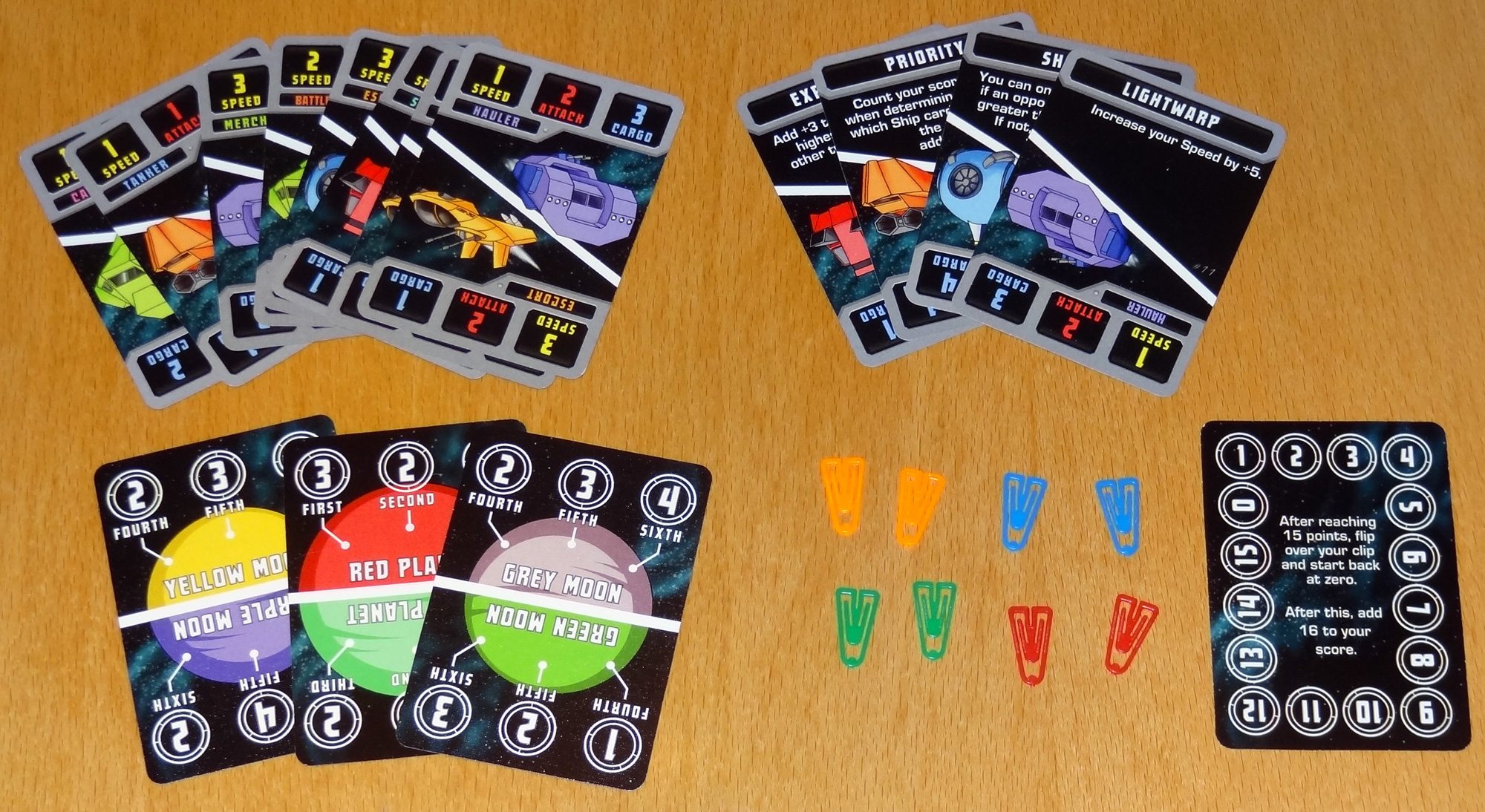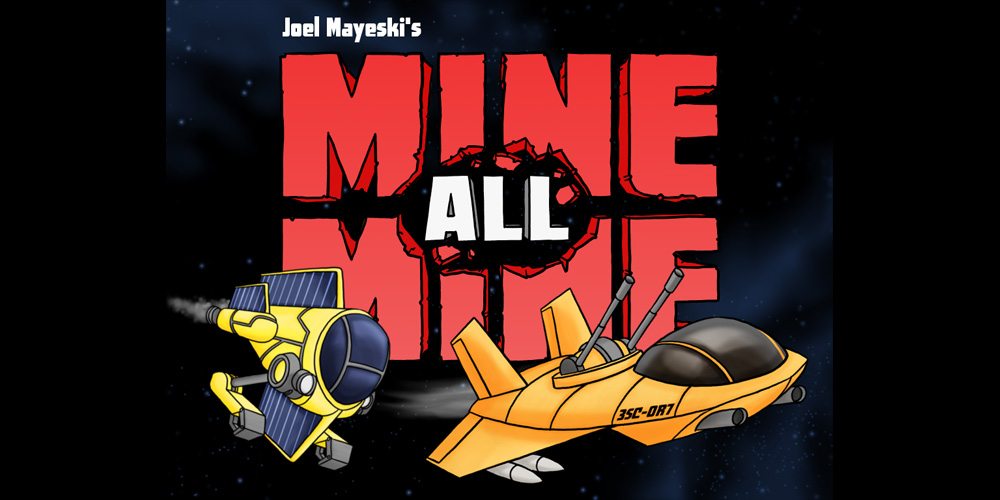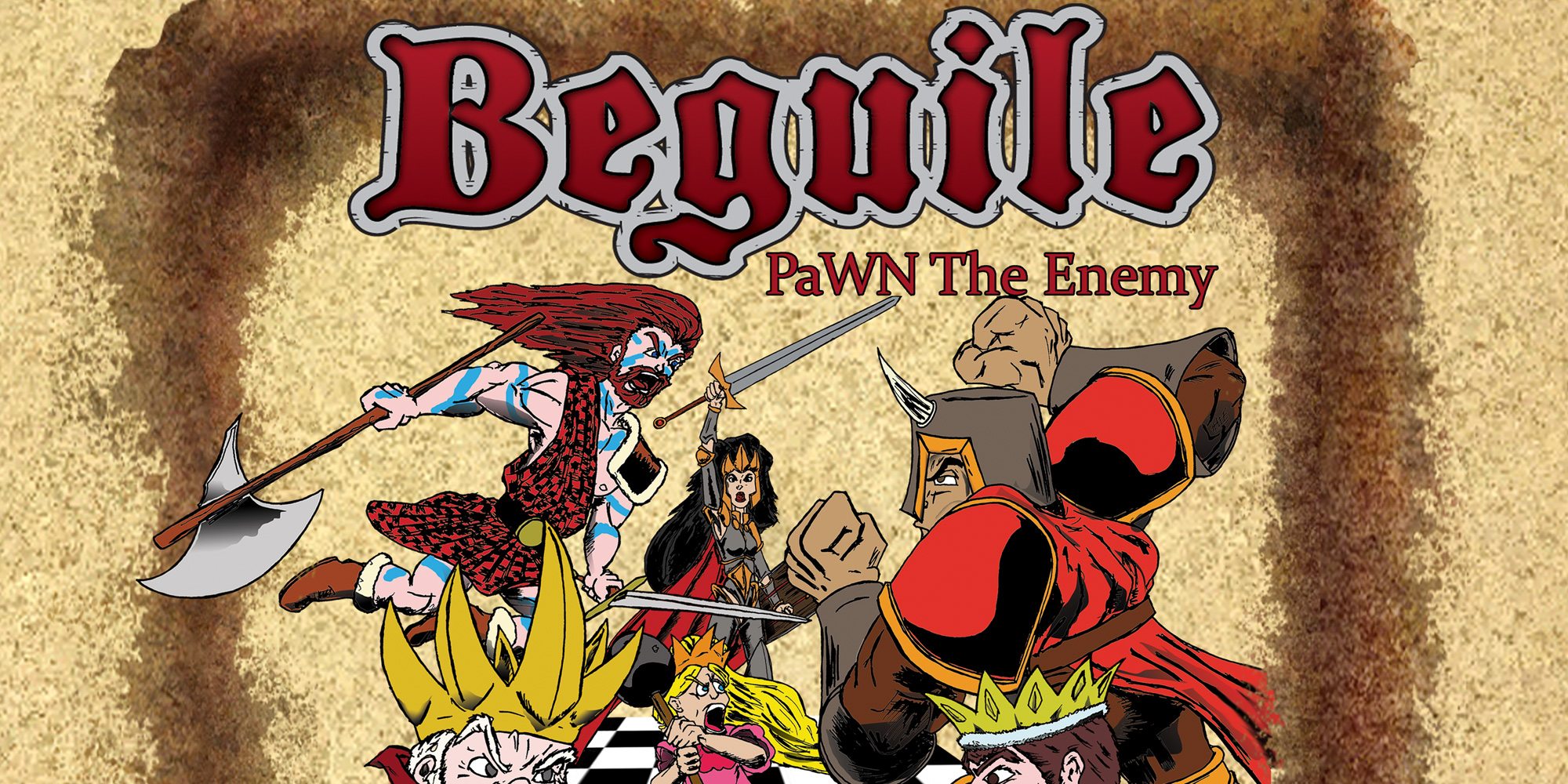You’re in charge of a fleet of ships headed out to some faraway planets to mine valuable minerals there. Maybe it’s unobtainium? Oh, except there aren’t any pesky natives to worry about—at least as far as you’re concerned. There are, however, other fleets with the same idea—balance your speed, firepower, and cargo space.
At a glance: Mine, All Mine is a quick-playing microgame by Joel Mayeski for 2 to 4 players, ages 8 and up, and takes about 10 minutes to play. It’s currently on Kickstarter, and a $7 pledge will get you a copy of the game. (Higher pledge levels will let you name and help design planets and moons—but there aren’t many of them!) I’d recommend playing with at least 3 players simply because there’s a little more going on.

Components:
- 12 double-sided ship cards
- 3 double-sided planet cards
- 1 score card
- 8 tracking clips (4 for scores, 4 for fleets)
I played a demo copy, but the overall components will remain approximately the same. The planets and moons may have names rather than colors, but I believe for the most part things are finished. With only 16 cards and a few clips, Mine, All Mine definitely qualifies as a microgame.

Each ship card is not only double-sided but each side has two options. So each card gives you three options for ships and one special power. The planet cards have two planet options on one side, and two moon options on the other. The clips are those little plastic triangle-shaped paper clips, and come in 4 different colors.
The game is designed so that you can also use the table-free variant, with everyone holding their cards and the clips actually clipped onto the scoring track. The downside is that it does wear out the clips, and it’s hard to have multiple players clipped to the same score.
How to play
You can download a PDF draft of the rules here.
The goal of the game is to have the highest score after 3 rounds by successfully mining minerals from the planets and moons.
Each player gets a tracking chip of their color to act as their fleet, and the other goes at the 0 space of the scoring track. You flip-shuffle the three planet cards and place either 1 (for 2 players) or 2 (for 3-4 players) on the table. To flip-shuffle, basically you flip the cards end-to-end. If you’re using two cards, line them up (and flip if necessary) so you have a planet followed by a moon. Each player gets 3 ships randomly dealt to them.
Each player assembles a fleet, choosing any of the ships or special abilities dealt to them. You don’t have to use all of the cards, either—you can save extras for the next round if you don’t think you’ve got any chance of getting much this round. Once everyone is ready, all the fleets are revealed simultaneously.

The highest total speed goes to the first spot on the planet, second-highest speed goes to the second spot, and so on. However, if your fleet’s speed is 4 or more greater than the next one, you leave a spot open—this represents the fleet getting there so quickly it can mine two places before the next fleet shows up at the planet. Fleets with the same speed go to the same location.
Then, you start mining from the first location. If you’re alone, you get all the points, then move on. If there are two or more fleets, the highest attack value scares off the other fleets (who return home). If attack values are tied, the fleets take turns mining one point at a time, starting with the higher speed. You continue until all of the locations have been mined.
The third attribute of your fleet is the cargo space—that’s the maximum number of points you can collect during this round. So if you have a high speed and attack but you run out of cargo space, you still move along, potentially blocking others from gaining points, but you don’t get any more points yourself, either.

Once the planets have been mined, the used ship cards are collected, shuffled, and redistributed, starting with the player with the lowest score and ending with the highest. If not all the ship cards were used in a round, that means that some players may end up with extra cards during the next round. You also remove the planet/moon cards and reshuffle them.
The game ends after three rounds. Highest score wins.
The Verdict
I’ve mentioned before that I like microgames because it’s fun to see how much game you can fit into a small package. When I first tried Mine, All Mine, it didn’t quite catch me, but then I realized I’d gotten a few rules wrong. (Also, I think the 2-player game is a little weak, but with 3 or 4 it’s much more interesting.)
I like the balancing act between speed, attack, and cargo. If you’re fast enough, you can scoop up some minerals before the next ship comes along and drives you off with their guns—that’s a good strategy for planets that have more points up front. But if most of the points are toward the end, having strong attack is better because you can just drive off everyone else and pick up your points then. Neither of these will help you, though, if your cargo hold can’t hold any points.
Each of the ships has 6 points’ worth of stats total, but there are different mixes of ship cards. The abilities are also pretty fun. I played with kids without the abilities—just use the side that has two ships—and it’s easy to teach that way, but the abilities really make things more fun. Lightwarp adds 5 to your speed—but then that card doesn’t add any attack or cargo to your fleet. Shields don’t help you attack, but they let you stick around and collect points even if you’re outgunned. Expert Crew just boosts a few of your stats, and Priority ensures that you’ll get ship cards before everyone else—very nice if anyone used fewer cards this round.
Speaking of which, using fewer cards and saving up for a big boost next round can be a nice strategy. You might get to use a couple abilities together and still have a big enough cargo hold to make it worth it—but of course it also depends on which planets and moons turn up next.
Mine, All Mine is not a very deep game. At only ten minutes (and three rounds), it’s over quickly and you can’t do a lot of long-term planning. However, I do think it’s a fine microgame that can be fun for you and your kids, and for only $7 it’s something you can throw in your pocket and play anywhere. I haven’t played the table-free version, which actually changes the rules slightly, but I like the fact that it’s an option.
For more about Mine, All Mine, visit the Kickstarter page.
Disclosure: GeekDad received a demo prototype of this game for review purposes.





